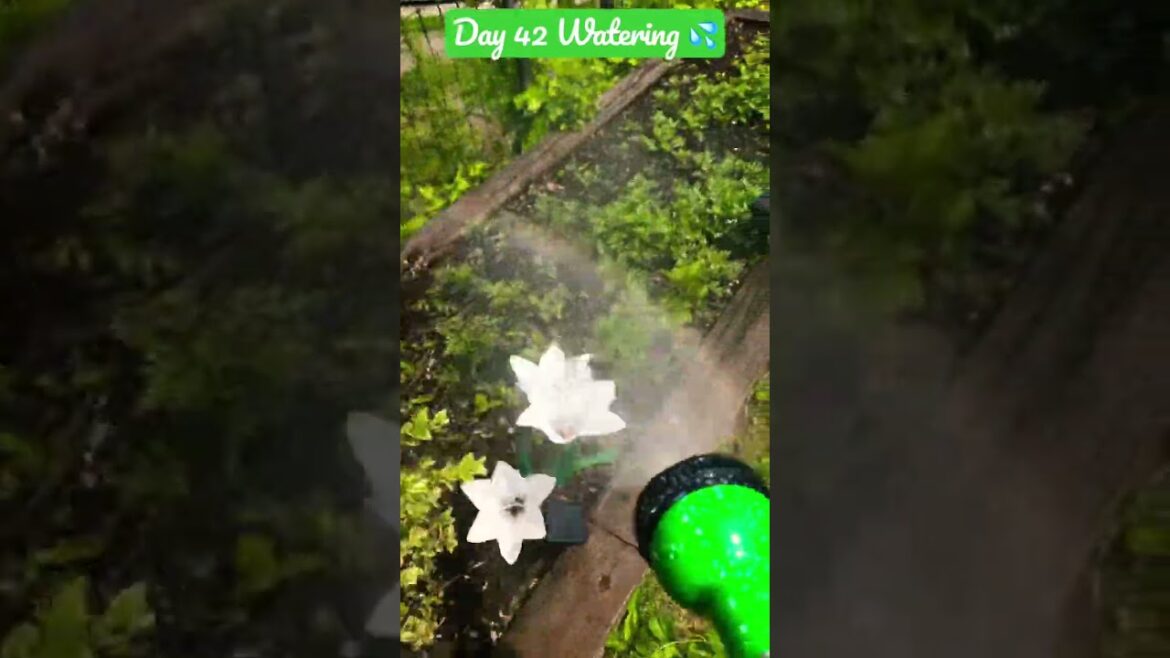When watering plants during the summer, it’s important to keep the following considerations in mind:
1. Water Deeply: When you water, provide a thorough soaking to encourage deep root growth. Shallow watering leads to shallow roots, which can make plants more susceptible to heat stress. Apply enough water to penetrate the root zone of the plants.
2. Water Early or Late in the Day: Water your plants early in the morning or late in the evening when temperatures are cooler. This allows the plants to absorb water before it evaporates quickly in the heat of the day. Avoid watering during the hottest part of the day to minimize water loss through evaporation.
3. Water at the Base: Direct water to the base of the plants, focusing on the root zone. Avoid overhead watering or wetting the foliage excessively, as it can promote the growth of fungal diseases and increase water loss through evaporation.
4. Mulch the Soil: Apply a layer of organic mulch, such as wood chips, straw, or compost, around the base of your plants. Mulch helps retain soil moisture, reduces weed growth, and insulates the roots from extreme temperatures. It also helps conserve water by reducing evaporation.
5. Monitor Soil Moisture: Regularly check the moisture level of the soil. Stick your finger or a moisture meter a few inches into the soil to assess whether it is dry or moist. Water when the soil feels dry, but avoid overwatering, as it can lead to root rot and other issues.
6. Consider Plant Needs: Different plants have varying water requirements. Some plants, like succulents or drought-tolerant varieties, require less frequent watering, while others, such as vegetables or annual flowers, may need more frequent watering. Understand the specific needs of your plants and adjust your watering schedule accordingly.
7. Adjust for Rainfall: If you experience rainfall, take it into account when determining your watering schedule. If the soil is adequately moist from rain, you may need to water less frequently. On the other hand, during extended dry periods, you may need to supplement rainfall with additional watering.
8. Be Mindful of Water Conservation: While it’s important to water your plants, be mindful of water conservation. Avoid wasteful practices like watering paved areas, using sprinklers that mist or overspray, or watering excessively. Use water-efficient methods such as drip irrigation or soaker hoses to deliver water directly to the plants’ roots.
9. Observe Plant Signs: Pay attention to signs of plant stress or dehydration, such as wilting leaves or yellowing. Adjust your watering practices accordingly. However, be cautious not to overwater, as it can lead to root problems.
10. Adapt to Individual Plant Needs: Each plant species may have unique water requirements, so adapt your watering practices accordingly. Consider factors like plant maturity, soil type, sun exposure, and weather conditions to determine the appropriate watering frequency and amount for each plant.
Remember, it’s better to water deeply and infrequently rather than lightly and frequently, as deep watering encourages the development of a robust root system. By being attentive to your plants’ needs and providing adequate water during the summer, you can help them thrive and withstand the heat.

